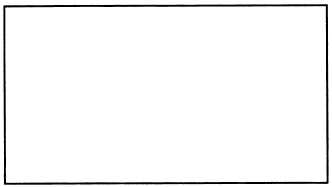used for all other gas turbine-powered ships. Take a
brief look at these two methods to measure main thrust
bearing clearances.
Static Method
In the static method, a dial indicator is mounted on
top of the aft end of the thrust housing with the zero
pointer against the forward face of the first shaft flange
aft of the thrust bearing. While the controllable and
reversible pitch (CRP) system is operating, the propeller
pitch is advanced to 100 percent ahead with the local
controls at the oil distribution (OD) box. The electric
CRP pump is then secured, and the hub servo
bottomed-out by use of the emergency pitch hand pump.
The reduction gear is then rocked with the turning gear
motor by use of the ratchet wrench to turn the motor.
This movement assures that the shaft is bottomed-out
on the ahead thrust collar.
If the clearance is within normal limits, and no
abnormal conditions exist, log the readings and put the
system back in service. If the clearance is not within
normal limits, or a noticeable increase or decrease is
measured, inspect the thrust bearing. Check for any
abnormal rendition (scored or wiped shoes) and take
corrective action as necessary.
NOTE
Approximately six to eight turns of the
wrench in either direction will remove the
backlash; turn an additional two to four
turns. Repeat once or twice in each direction
with 2500 to 3000 psi on the emergency hand
pump.
Dynamic Method
Like the static method, the dynamic method
requires a dial indicator and instrument placement to
measure the shaft deflection. Dynamic measurements
are done while the propulsion shaft is in operation.
Communications must be established from the area of
the thrust bearing to the station with throttle control.
The ship must be operated in the ahead direction at a 1/3
bell for 10 minutes. Allow the shaft to coast to a stop
and then position the dial indicator against the shaft
flange. After the indicator is in place, operate the ship
in the astern direction at a 1/3 bell for 5 minutes. After
allowing the ship to coast to a stop, record your
deflection reading. This procedure is repeated two more
times (three times total). You must use the average of
these three readings to obtain the main thrust bearing
clearance. Designed thrust bearing clearance is 0.030"
to 0.045", with a maximum of 0.080".
For specific detailed information on these
procedures, consult the applicable PMS maintenance
requirement card (MRC) or manufacturer’s technical
manual for the speed decreaser gear installed on your
ship.
CLUTCH AND BRAKE ASSEMBLIES
Depending on the type of ship to which you will be
assigned, you will encounter either one or both of the
two types of current clutch assemblies used on gas
turbine-powered ships. The first and most widely used
clutch assembly is the synchro self-shifting (SSS) type.
This type of clutch assembly is installed on all CG-47,
DDG-51, and FFG-7 class ships. The other type is a
pneumatically operated, forced-synchronization type of
clutch assembly. The forced-synchronization clutch
assembly is installed on DD-963 and DDG-993 class
ships.
Along with the two types of clutch assemblies, there
are two types of power turbine (PT) brake assemblies
installed on gas turbine-powered ships. The type of
brake assembly used depends not only on the ship class,
but also on the type of clutch assembly installed.
In this section, we will briefly discuss the normal
operation and maintenance related to both types of
clutch assemblies and all the brake assemblies. Because
of the complexity, the elaborate control system, and the
large number of labor hours required for maintenance,
t h e N a v y i s g r a d u a l l y p h a s i n g o u t t h e
forced-synchronization type of clutch. Because of this
phase-out, we will focus our discussion on the
maintenance practices associated with the SSS type of
clutch.
NORMAL OPERATIONS
Both types of clutch assemblies perform the same
function. They connect a GTM or the GTMs to the
MRG to drive the propulsion shaft. It is not the function,
but the method of clutch engagement that varies
drastically between the SSS and forced-synchronization
clutches.
3-8

